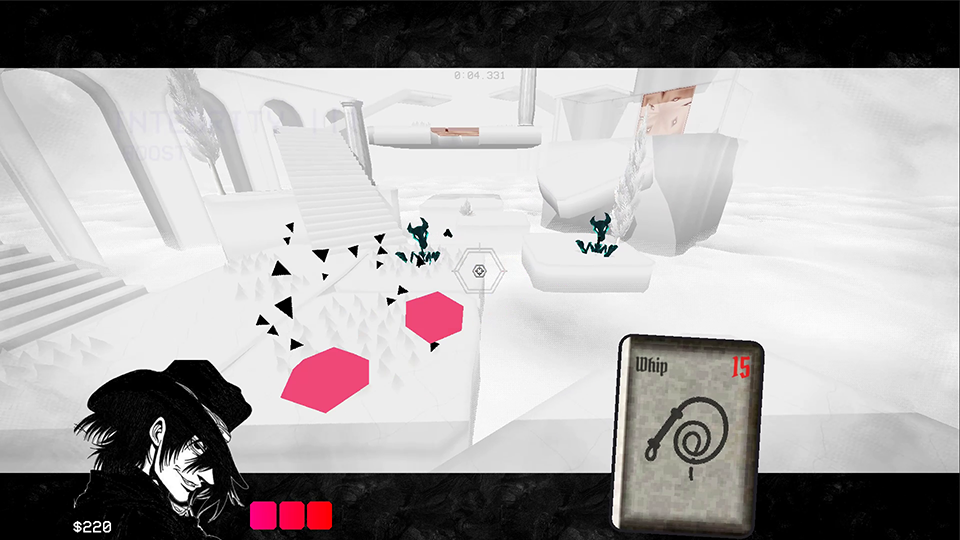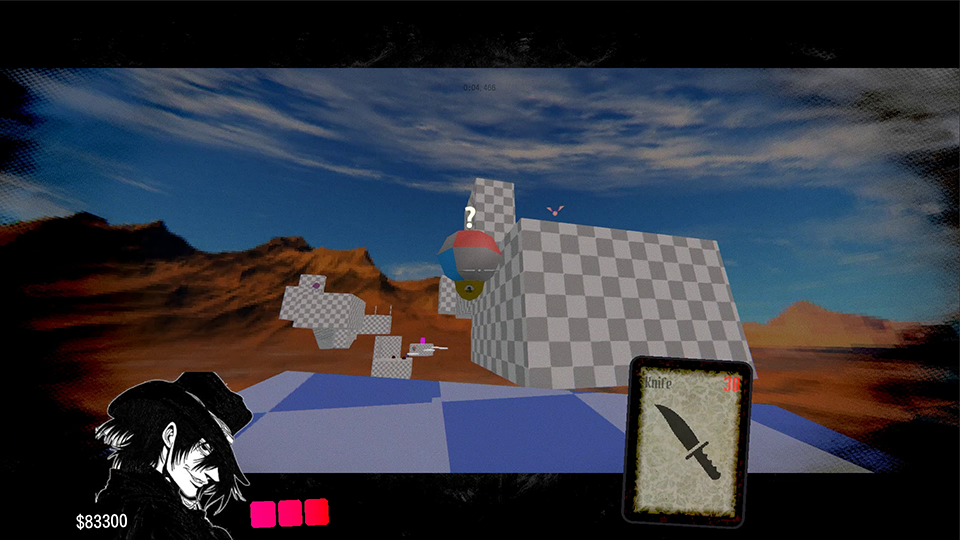Tales from Neon White’s prototyping phase.
Tough news.
Recently we put a game project on ice. It was a cool idea and good work was done on it, but it wasn’t coming together. Now I’m considering new ideas. I’m troubled by this simple question, though: How can I prove that my game idea is good?
At first look, “How can I prove that my game idea is good?” is a worthy problem to solve. And it may be for you. The issue is that when I come up with a game idea, it’s clearly very good.
To avoid the unpleasantness of proving that it’s good, I’ll just start making it. I’ll shop for logo fonts. I’ll code some system that will help with localization down the line. The truth is, none of that work matters when I finally get to building “the good part” a year later and the “good part” is actually the bad part from Billy Hatcher and the Giant Egg (just kidding, Billy Hatcher has no bad parts).
After putting myself through this last year, I tried inverting the way I thought about prototyping. I came up with P.Y.G.S. aka Prove Your Game Sucks.
I don’t want P.Y.G.S to sound cynical because it’s not. It’s so much easier than proving the game is good. If your job is to prove the idea sucks, then you simply have to build the “good part” and play it. There’s no reason to hold back because if you genuinely tried and it sucks, you saved yourself time, money, and heartache. You have no excuse to keep working on it.
If you’re lucky, you will fail to P.Y.G.S. That’s the enviable problem I had with Neon White in 2018.

You were dealt a bad hand
In 2018 I wanted to make a deckbuilding roguelite FPS (it was trendy at the time… and probably still is). Now, that phrase might conjure images in your head. If you’re nice, you might even imagine me making that into a good game. But it’s not much of an idea.
I didn’t know that yet, so I built a prototype. The idea was you’d assemble a deck of gun cards and enter a random level. You’d draw cards and have to improvise with what you had. As it turns out, randomly switching guns wasn’t the slam dunk I had imagined.
The bad part was clearly the randomly drawn cards, and that was kind of the entire point of doing a deckbuilder roguelite, right? I was disappointed!
So my attitude toward the prototype changed. I was no longer precious about it. I had spent a few weeks on it though, so instead of just throwing it away I asked: what would I need to do to prove that this idea is so bad that I should throw out the prototype?
I put aside the genre and considered only the most important feature: guns are cards. How could that be fun? If I gave it my best try and it sucked, I could peacefully throw out the prototype. Unfortunately, I could not throw it out, because that same day I stumbled on the design for Neon White.

Time Trials
What’s fun about the guns being represented as cards? I wasn’t sure. I knew that cards are drawn, played or discarded. In some cases it’s valuable to hold on to them, but the price is often that you limit the new ones you can pick up. I played my prototype again. Play, discard, or hold onto it. As a player, I wasn’t actually making those choices.
Play, discard, or hold onto it. Play, discard, or hold onto it.
The next step struck me. Just make it so that each of those three options is valuable. Free from the deckbuilding and roguelite assumptions, I went ahead and designed a level and placed cards manually on the stage. Then I just needed to make it valuable to discard the cards. I had platforming in the game, so the easiest thing to try was discarding a card gave you a double jump.
Double jumping is pretty fun, but the extra movement would be really valuable if the player wanted to get somewhere faster. The easiest way I could think to do that was to put a timer on the level.
I didn’t set out to design a time trial game. I just put a timer on it and sent it to my friend Tom, who is very competitive. It was 3 tiny levels. No offense to Tom, but when I saw his times it was obvious that I could beat him. We traded scores back and forth. I think literally all I had was the pistol that gave you a double jump, but the experience of optimizing when to discard that card to beat Tom’s score was undeniably fun.
I had failed to prove the game sucked, and was left with a miserable little prototype that was surprisingly fun to play.
P.Y.G.S is not going to be useful for everyone, but I imagine with slight modifications it could help other people in getting unstuck creatively. If you write stories, maybe you can try P.Y.S.S.
Thanks for joining me. I’m applying P.Y.G.S. to a few new game ideas right now and with luck, I will fail.
P.S. If you want to go deeper on the subject, I highly recommend this video about prototyping by Jonas Tyroller which came out shortly after I wrote this. It’s a fresh and practical perspective on the process of game design.